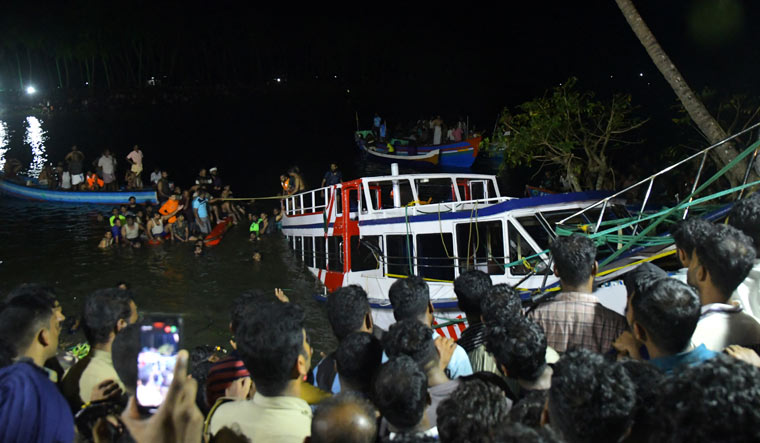The boat tragedy, which occurred in the Poorapuzha estuary in Malappuram district of Kerala on Sunday night, is a stark reminder of the importance of adhering to safety regulations. The tragedy claimed the lives of 22 people, including seven children, and left the entire country in shock. While investigations are still ongoing, it is clear that several rules were violated, leading to the fatal accident.
One of the major factors that caused the Tanur boat tragedy was overloading. The boat, which was originally designed to carry only 25 people, was filled with almost double that number, with reports suggesting that there were between 40-50 people onboard. Overloading a boat is strictly banned as it can cause instability and increase the risk of accidents, as seen in this case.
Another factor that contributed to the tragedy was the illegal modification of the boat. The boat was originally a fishing boat that had been converted into a tourist boat at an unlicensed yard in Ponnani. The conversion violated rules that prohibit the modification of fishing boats for tourism purposes. The boat did not have a license, and it did not have a fitness certificate, which is mandatory for all boats and their associated equipment. The registration process was also incomplete, with reports suggesting that the boat was in service even before the registration process was over.
The operator of the boat, Nasser, remains absconding and has been charged with murder. It was his responsibility to ensure that the boat was in a worthy condition and evaluate if weather conditions were favorable before the launch. However, the boat started off at 6.50 pm, violating the rule that boats should not operate after 6 pm. Additionally, the passengers were not evenly distributed, and some of them ran to one side, causing the boat to tilt and eventually sink. There were no life jackets or buoys available to passengers, and the boat had only two doors, which delayed the rescue operation.
The Kerala state government has declared a judicial inquiry into the tragedy that has once again highlighted the importance of adhering to safety regulations and the need for stringent checks and balances to ensure compliance. Over the years, several boat tragedies have occurred in India due to the lack of adherence to safety regulations. In 2007, the Thattekad lake mishap claimed 18 lives, while the Wular lake tragedy in 2006 led to the deaths of 21 children.


